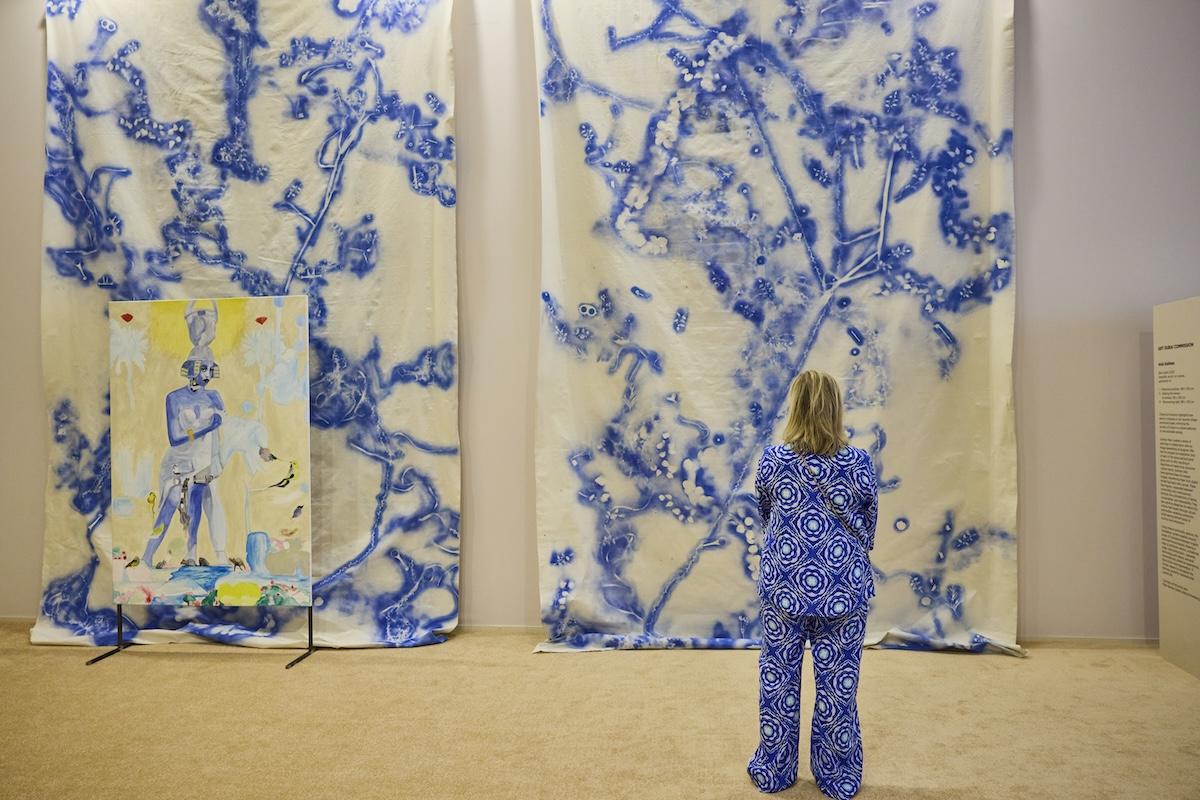Digitizing Services Empowering Small Designers | Future of Local Art in 2025

Introduction
The world of design and fashion has witnessed a rapid digital transformation, but one of the most impactful revolutions is happening quietly—among small-scale and local designers. Digitizing services, especially those tailored for embroidery and textile-based art, are redefining how local artisans create, market, and distribute their work. This article explores how digitizing services are helping small designers scale their craft while maintaining their creative integrity.
What Are Digitizing Services and Why Do They Matter in 2025?
Digitizing services refer to the process of converting physical designs, artwork, or concepts into digital formats compatible with embroidery machines, printers, or cutting tools. This isn't just about turning drawings into files—it's about preserving the essence of hand-crafted design in a format that can be reproduced, edited, and distributed with precision.
With the rise of remote work, AI-driven platforms, and e-commerce, demand for personalized, localized, and meaningful design has surged. For small-scale designers, embracing digitizing services means gaining access to:
-
Automated scaling of patterns and art
-
Quick prototyping
-
Global production possibilities
-
Higher precision in thread-based or fabric-based products
Empowering Small Designers Through Smart Digitization
1. From Sketchbook to Stitch: Turning Ideas Into Sellable Products
Traditionally, a designer had to manually replicate designs or rely on costly digitizers. But in 2025, with AI-powered digitizing software, small-scale designers can scan or upload their designs and have them instantly converted into embroidery-ready files. This drastically reduces time-to-market.
For example, a hand-drawn illustration can now be turned into a machine-readable DST or PES file within minutes—saving hours of labor and ensuring consistency.
2. Cost-Efficient Customization
Small designers often work with limited budgets. Digitizing services allow them to offer customized embroidery or print solutions without investing in heavy machinery or large inventory. Instead of producing 500 copies of the same design, they can create 10 variations with slight modifications—digitally and cheaply.
The Role of AI in Modern Digitizing Services
Artificial Intelligence is enhancing digitizing accuracy and creativity like never before. Here’s how:
Automated Stitch Mapping
AI tools now analyze shapes, densities, and thread tension automatically—resulting in flawless embroidery outcomes, even on complex fabrics.
Pattern Recognition for Replication
Designs created once can now be replicated for different materials (canvas, denim, silk) through AI-driven pattern adaptation. No more manual tweaking.
Style Transfer Features
Designers can now apply “styles” to their embroidery just like filters on social media, making it easy to adapt their artwork to multiple themes and collections.
Case Study: A Local Designer’s Journey with Digitizing Services
Meet Sana Malik, a textile artist from Lahore, Pakistan. She started with hand-embroidered tote bags sold via Instagram. In early 2024, she began using digitizing services to convert her embroidery designs into files compatible with multi-needle machines.
Result?
-
Production time reduced by 70%
-
Order capacity increased 5x
-
Collaboration offers from international brands
Sana now runs a full-time label that integrates handcrafted charm with machine-aided precision—all thanks to digitizing services.
Challenges and Solutions for Small Designers
While digitizing services bring many advantages, some challenges still exist:
| Challenge | Solution |
|---|---|
| Lack of Technical Skills | User-friendly interfaces and tutorials are improving accessibility |
| Inconsistent Output | AI quality-check tools reduce error rates |
| High Software Costs | Free or low-cost platforms like Ink/Stitch and Wilcom Workspace offer alternatives |
What to Look For in a Digitizing Service as a Small Business
When selecting a digitizing service, small-scale designers should prioritize:
-
File format compatibility (DST, PES, JEF, etc.)
-
Turnaround time and scalability
-
Affordability and support
-
Design preview tools
-
AI-enhanced features like auto-corrections
Future Trends: What’s Next for Digitizing Services in 2025 and Beyond?
The next wave of innovations includes:
-
Cloud-based embroidery software for real-time team collaboration
-
Blockchain verification for design originality
-
Voice-guided digitizing apps for creators on the go
-
AR previews of embroidered designs on virtual garments before stitching
These features are geared toward making digitizing services more accessible and powerful for even the smallest of businesses.
Conclusion: A Digital Revolution for Grassroots Creativity
As 2025 unfolds, the digitizing revolution isn't just benefiting big manufacturers—it’s empowering everyday creators. By bridging traditional craftsmanship with modern technology, digitizing services are allowing small-scale designers to dream bigger, work smarter, and expand globally.
If you’re a local artist or designer still unsure about digital tools, now is the time. The right digitizing service can help your brand stand out in the crowded world of personalized, expressive design.
To truly benefit from digitizing services, small-scale designers should implement smart strategies alongside technology. Here are some actionable tips:
Bonus Tips for Maximizing the Impact of Digitizing Services
✅ 1. Batch Your Designs
Instead of digitizing one design at a time, prepare collections or batches. This streamlines the workflow and often reduces digitizing costs with bulk orders.
✅ 2. Invest in a Style Guide
Create a personal or brand-based embroidery style guide (including thread preferences, placement rules, stitch types). This ensures your digitized files are always consistent with your aesthetic.
✅ 3. Build a Design Archive
Maintain a cloud-based library of all your digitized files. Tag them by project, colorway, customer, or season for easier reuse and edits.
✅ 4. Experiment with Different Fabric Types
Don’t limit your digitized files to just one fabric. Test them on denim, fleece, nylon, etc. A versatile design increases product range and marketability.
Top 5 Digitizing Tools/Platforms for Small Designers in 2025
Here’s a curated list of tools to consider if you're starting or scaling:
| Platform | Key Features | Cost (approx.) |
|---|---|---|
| Wilcom Workspace | Browser-based, file previews, editable templates | $25/month |
| Ink/Stitch | Open-source, SVG support, ideal for hobbyists | Free |
| Embrilliance Essentials | Beginner-friendly, Mac and PC support | $139 (one-time) |
| Hatch Embroidery Digitizer | Advanced controls, AI features, 3D previews | $149/year |
| TruEmbroidery | Tailored for Mac users, auto-conversion tools | $200 (one-time) |
Always test the trial version before purchase to ensure compatibility with your needs.
How to Market Your Digitized Designs in 2025
Once your designs are digitized, you must position them effectively in the market. Here are current trends to watch:
🎯 Social Media Product Drops
Use Instagram Reels, TikTok tutorials, and YouTube Shorts to showcase how your embroidered designs come to life.
🎯 Etsy and Niche Marketplaces
Platforms like Etsy, Society6, and even Pinterest-integrated shops now allow selling embroidery files directly. Package your designs with mockups for added appeal.
🎯 Email Newsletters
Targeted newsletters to local clients or buyers can include sneak peeks of upcoming digitized collections.
🎯 Collaborations
Team up with screen printers, apparel brands, or other designers to bring your digitized creations into physical products.
Sustainability and Digitizing: A Perfect Match
Another underrated benefit of digitizing services is reduced material waste. Unlike traditional embroidery processes where testing and sampling eat up fabric, digitizing allows:
-
Virtual previews before production
-
Fewer physical samples
-
Reduced energy consumption in revisions
This supports the growing eco-conscious fashion trend and aligns your brand with sustainable design practices.
Expert Advice for First-Time Digitizing Clients
If you're new to the world of digitizing, consider these pro tips:
-
Always send high-resolution artwork (300 DPI or vector).
-
Clearly specify fabric type, dimensions, and thread colors.
-
Ask for a sample preview image before final production.
-
Save your files in multiple formats (DST, PES, EXP, etc.) for flexibility.
Tip: Many digitizing companies offer re-editing support for free within 7 days of delivery. Always ask.
Final Thoughts: Digitizing Services as a Growth Engine
The creative economy is booming, but only those who blend tradition with tech will thrive. Whether you’re stitching by hand or using multi-head embroidery machines, digitizing services give your craft scalability, consistency, and creative freedom.
From empowering a solo designer in a small studio to enabling global fashion collaborations, digitizing is no longer a luxury—it’s a necessity for growth in 2025.
📌 Summary Table – Why Digitizing Services Are a Game-Changer in 2025
| Benefit | Description |
|---|---|
| Scalability | Create hundreds of stitched copies from one digital file |
| Affordability | Reduces sampling and manual labor costs |
| Precision | Ensures every design looks consistent |
| Global Reach | Lets small designers serve international clients |
| Eco-Friendly | Minimizes waste and reduces manual revisions |
✅ Suggested Next Steps
If you're a designer or small business owner:
-
Start with 1–3 core designs and get them digitized.
-
Use mockups to test on social media before bulk production.
-
Explore embroidery partnerships or print-on-demand suppliers that accept digitized files.
You’re no longer limited by your sewing machine or sketchbook. The digital thread is your gateway to global success.




